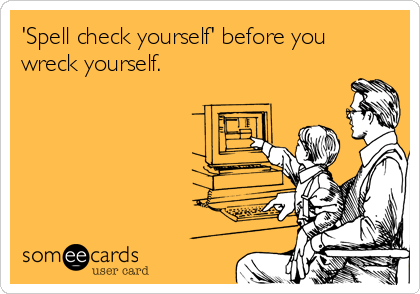Highly publicized brands have been the brunt of a joke. But, could an intentional prank lead to larger-than-life exposure? Check this out:
April 1, 1996:
Plastered in a full-page ad across several major newspapers, Taco Bell Corp. announced their alleged purchase of the Liberty Bell and their plans to rename it the “Taco Liberty Bell”.
Why this works: It’s a great play on their name. Plus, it eclipses a piece of American history with playful satire and enough hilarity for readers to do a double-take.
April 1, 2016:
“Mic Drop” debuts as a Gmail feature. Users could now send emails with the help of an animated gif – a minion dropping a microphone. The prank goes haywire, however, when unsuspecting folks accidentally click on the button sending business emails with “ultra-inflated” confidence.
Why this flopped: The GIF caused confusion leaving professional contacts to interpret the sudden turn in tone. Google removed the feature within several hours of its launch.
So, there’s no time like the present to get serious about being funny. A good meme, done right, lives on in social media infamy. Yet, the goal is to be in people’s memory banks without inflicting personal offense.
In other words, it’s time to roll up your sleeves, gather your most humorous content, and share those creative juices with the digital world. But don’t force the humor; there’s nothing worse than a brand that tries to be a hoot, but doesn’t quite hit the mark.
The Benefits Of Using Humor On Social Media
Now that you’re well aware of the downfalls of incorporating humor into your social strategy (and how it can damage a brand’s credibility), let’s touch on some positives:
- Humorous posts can make your brand more transparent and relatable.
- Tongue-in-cheek copy can help your audience remember you.
- Sharpening an edgier voice can make your content more shareable.
Know The Correct Way To Use Memes
Yes, there is an incorrect way to use memes! But, if done right, they could be one of the best tools for elevating your business. Memes can be influential, act as content enhancers and attention grabbers, and add fuel to your social media persona.
Here are some ways to make sure you’re sharing the right memes:
- First and foremost, if you’re looking to source an image, you must have the legal rights to use it. Along with a meme backfiring for its actual message, it’s just as problematic to have a meme backfire for violating licensing rights.
- Make sure it appeals to your targeted audience. Will they understand it? Can they relate?
- Memes work best when they align with your branding. Stay in your lane with your brand voice and tone. Developing something that strays too far from what your consumers are used to could potentially backfire.
Here’s an example of what works: The last month of the year has us exhausted and in favor of winding down. Yet, a copywriter can’t afford to sleep on-the-job. So, she blatantly pokes fun at the working grind, while positioning herself as “in demand”.

Human spell checker and wordsmith at your service.
Booking clients for January. Avoid the “wreckage” and get in touch.
Use Humor In Your Social Media Videos
The stats surrounding video engagement continue to grow: In 2017, it’s estimated that viewers watched about five billion YouTube videos every single day. In that same year, Facebook video was a major priority for 30 percent of marketers. Say WHAT?!
If you’re not already harnessing video in some capacity, the joke might be on you. Video is a great way to bring your brand personality to life in a dynamic fashion. Here are some overall tips for utilizing video content in your social media marketing plan.
- Videos can be a few seconds long to a few minutes. Each platform has its own length stats (IG:30 seconds, TW:45 seconds, FB:60 seconds, and YouTube:120 seconds). Be sure to add a logo and call-to-action, so your audience knows who you are and what they should do next (i.e., visit your website or sign-up for a webinar).
- Don’t shy away from being quirky! If you’re in a very niche industry, explore beneficial ways for thinking outside of the box like, Blendtec, a commercial blender company who milked their series, ‘Will It Blend?’
- Sometimes, raw and uncut clips are the videos people want to see. Don’t feel the need to use expensive equipment and studio space. Test the waters of video creation with your smartphone. This can be the most relatable content for your audience – unpolished, yet completely genuine.
How do you plan to make your quirk work? Schedule a consultation with One Part Social today.
If you liked this article, please pass it on.
